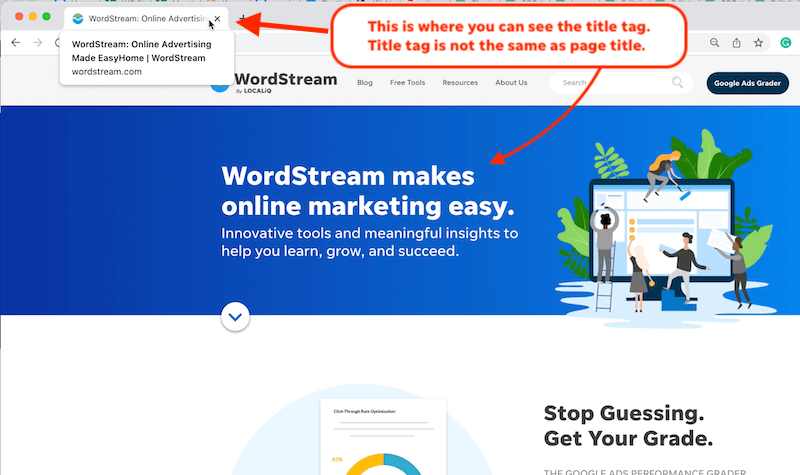Revealing the Unconventional Mediums in Google Analytics Beyond Default Setups
In the world of digital analytics, Google Analytics stands as a foundation for services looking for to understand their online existence. While default setups supply valuable insights, real deepness of recognizing hinge on exploring the non-traditional mediums that commonly go undetected. By venturing past the surface area and delving into the complexities of social networks data, email campaign efficiency, referral web traffic sources, direct web traffic patterns, and custom-made network collections, a bonanza of info waits for those happy to accept a much more nuanced technique. What exists underneath these unique mediums may simply redefine just how organizations view and strategize their online initiatives.

Leveraging Social Media Site Insights
Occasionally ignored, yet tremendously useful, is the practice of leveraging social networks insights within the realm of Google Analytics. By integrating information from systems like Facebook, Twitter, Instagram, and LinkedIn into Google Analytics, companies can get a much deeper understanding of their audience and the efficiency of their social media sites projects.
Through this combination, marketing experts can track and evaluate customer actions on their website that originates from social networks systems. They can determine which social media sites networks are driving one of the most traffic, which content is resonating with the audience, and which campaigns are converting the most leads. This insight permits data-driven decisions to enhance social media sites approaches and boost total advertising and marketing performance.
Furthermore, by combining social media insights with Google Analytics, businesses can create more targeted and personalized campaigns - what is not considered a default medium in google analytics. They can use demographic information, passions, and on-line actions collected from social networks to fine-tune their audience segmentation and deliver customized messages that reverberate with certain client groups. This targeted approach can lead to greater involvement, boosted conversions, and eventually, improved roi
Revealing Email Project Performance
Uncovering Email Project Efficiency includes analyzing key metrics and efficiency signs to evaluate the performance of e-mail advertising efforts. When diving into e-mail project performance, it is crucial to analyze metrics such as open rates, click-through rates, conversion prices, and unsubscribe rates. Open up rates show the percentage of receivers that opened the e-mail, giving understanding into the effectiveness of subject lines and sender names. Click-through rates measure the percent of recipients that clicked on web links within the email, revealing interaction degrees. Conversion rates track the percent of recipients that completed a wanted action after clicking a link in the e-mail, such as signing or making an acquisition up for a newsletter. Unsubscribe prices highlight the number of receivers who decided out of receiving additional e-mails, shedding light on email material quality and significance. By analyzing these metrics, marketing experts can tweak their e-mail advocate far better engagement and performance.
Studying Recommendation Web Traffic Sources
After assessing the performance of email campaigns with crucial metrics such as open prices and conversion prices, the following critical action is analyzing referral traffic sources in Google Analytics to understand where website visitors are coming from and just how they interact with the website. Reference website traffic resources describe the internet sites that route individuals to your website with clickable links. By delving right into this information, organizations can obtain understandings right into which outside platforms are driving traffic to their site, whether it be social media systems, companion web sites, or on the internet directories.
It assists services determine high-performing referral sources that contribute considerably to web site web traffic and conversions. Google Analytics offers thorough records on reference traffic, permitting companies to track the performance of each recommendation resource precisely and make data-driven choices to enhance their online presence.
Exploring Direct Website Traffic Patterns
Discovering the straight web traffic patterns in Google Analytics supplies useful understandings right into customer the original source actions and the performance of projects - what is not considered a default medium in google analytics. Straight website traffic describes site visitors that come down on an internet site by straight keying the link right into their web browser, utilizing book markings, or clicking on untagged links. Comprehending direct traffic patterns can help online marketers examine the effect of offline advertising efforts, brand acknowledgment, and the performance of word-of-mouth recommendations
By delving into straight website traffic data, companies can uncover essential information concerning individual intent and brand loyalty. Assessing the actions of direct visitors, such as the web pages they check out, the time invested in website, and the conversion rate, can provide a much deeper understanding of individual engagement and the total efficiency of the site in converting site visitors into customers.
In addition, tracking straight traffic patterns with time enables businesses to identify trends, seasonality results, and the success of specific projects or promotions in driving straight check outs. This information can after that be used to fine-tune marketing approaches, enhance internet site material, and enhance the general customer experience to make best use of conversions.
Using Custom Channel Groupings
Making use of customized network groupings in Google Analytics enables businesses to categorize and assess their site web traffic based upon particular standards, providing useful understandings for optimizing advertising approaches. Customized network groups enable business to develop their very own customized collections of website traffic resources, such as social media, organic search, e-mail projects, and reference traffic. By defining these collections, organizations can gain a deeper understanding of exactly how various advertising and marketing networks contribute to their site web traffic and conversions.
This attribute is specifically useful for companies with diverse advertising approaches throughout numerous platforms. A company running both paid and organic social media campaigns can differentiate between the 2 to analyze their specific efficiency properly. In addition, personalized network groups can aid determine any type of ignored or undervalued website traffic resources that might be my latest blog post driving useful interaction.
Final Thought

By venturing beyond the surface area and diving into the ins and outs of social media information, email campaign efficiency, reference traffic sources, straight website traffic patterns, and custom channel collections, a prize chest of information awaits those ready to welcome a more nuanced method. They can determine which social media networks are driving click here now the most traffic, which web content is resonating with the audience, and which campaigns are transforming the most leads.After reviewing the performance of email campaigns with crucial metrics such as open prices and conversion prices, the following crucial step is evaluating recommendation web traffic resources in Google Analytics to comprehend where web site site visitors are coming from and just how they connect with the website. Personalized network groups make it possible for companies to create their very own tailored groups of website traffic resources, such as social media, natural search, e-mail projects, and recommendation web traffic. By leveraging social media insights, uncovering email campaign efficiency, assessing reference website traffic resources, checking out direct traffic patterns, and utilizing personalized network collections, marketing professionals can get useful insights into their online visibility.